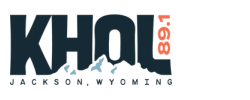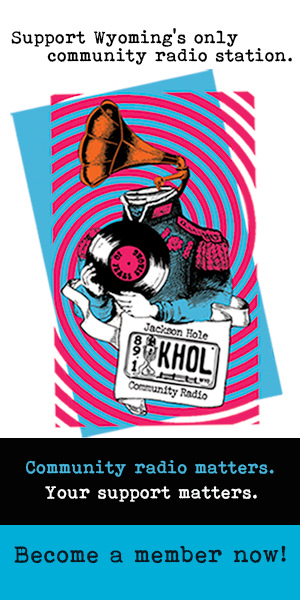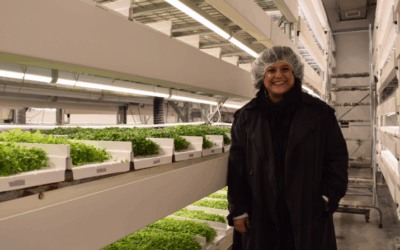Subscribe to Jackson Unpacked. Available wherever you get your podcasts.
The One Big Beautiful Bill Act cuts back Medicaid, beefs up border security, loosens environmental protections and puts in place tax breaks, mostly for the wealthy. Economist and Jackson Town Councilor Jonathan Schechter sat down with KHOL’s Dante Filpula Ankney to explain his analysis in his Cothrive newsletter of how those tax breaks will play out in Teton County.
This interview has been edited for clarity and length.
Dante Filpula Ankney: In this newsletter, the headline finding is that our capacity to give is actually about twice what we are giving in Teton County, north of $1 billion. Could you talk about that number and where it comes from?
Jonathan Schechter: On a per capita basis, Teton County, Wyoming is the wealthiest county in the wealthiest country in the history of the world. Our per capita income is about eight times that of the nation as a whole. And it’s about 75% to 80% higher than even the second place county.
We also have the greatest income inequality of any county in America. Living here is an embarrassment of riches, but it also means that there’s a lot of stuff happening at both ends of the spectrum, both good and bad. Now, let’s ask a really interesting philosophical question. What does it mean to be generous?
Across the United States, most of the charitable giving is tracked by the Internal Revenue Service. Our wealthy residents give more on a per return basis than in any other county in America. But that’s if you look at it on a charitable-giving-per-return basis. You can also look at another way. What percentage of your income did you give to charitable causes? And if you look at it that way, we don’t rank very highly. We rank high among the U.S. as a whole. But for example, going back to 2022, we ranked 44th. We gave about 8% of our total income. The national leader, a county in Arkansas called Benton County, which is the location of Walmart’s headquarters, those folks gave 14%. If we’d given at that 14% level, we would have given a lot more money, obviously.
And if you look at the numbers and you try to take the average, we have a gap, a giving potential of about another $500 million. [That’s] half a billion dollars more if Teton County’s wealthiest residents were giving at the same percentage level as those in Benton County, Arkansas.
DFA: What is stopping these wealthier residents from giving at that level, closing that gap?
JS: I can’t even begin to speculate. None of us alone can solve any of the challenges that we face. None of us alone can seize any of the opportunities that we faced. But if you think about it, each of us can take individual steps.
I think if you look at the history of philanthropy in the Tetons region, it’s something that’s evolved from sort of the heroic individual doing one thing into a more collective, as it’s become harder and harder to do big important things. And so my example to you is if you go back 75 years now, arguably the greatest public private partnership in the history of the United States, if not the world, was John D. Rockefeller Jr. donating 30,000-plus acres of private land to Grand Teton National Park. That was a heroic individual making one step. And then if you sort of move forward, there was a chance for other sort of heroic individual steps to occur in this region. The founding of the Jackson Hole ski area by one man, Paul McCollister, in the early 1960s. Mr. and Mrs. Old Bill coming forward and starting what is arguably the most innovative charitable activity in the United States.
The ability for any one individual to affect our community is becoming increasingly difficult as more people move here, as more wealth and sophistication come in. So, to get back to your question about how do we go about filling that $500 million gap, that half a billion dollar gap. I don’t know that there is any one answer, but I think part of it is just drawing attention to it. That’s where my hope stems from. But I can’t even begin to put myself inside the mind of the ultra wealthy because unfortunately I’m not one of them.
And ultimately I think this comes down to a sense of stewardship around what is this place? What did past generations do to allow us to enjoy it? What is our obligation to future generations to make sure that they can continue to enjoy it? Can we leave Jackson Hole better than we found it? And for those who have the ability to give through charitable giving, perhaps they will do it.
DFA: There’s over 200-some nonprofits in town. In a town of 10,000, we have so many nonprofits, right? I just wonder if relying on private philanthropy is a sustainable model?
JS: Arguably government funding until these past six months has been a much more stable and reliable source of funding because the pool is much larger and just government processes once something gets entrenched, it stays funded.
So the interesting question, or one of the many interesting questions that we as a community face is: do we have the capacity of this $500 million in excess funding or in additional philanthropic potential? Do we have that potential to plug a lot of these gaps? Yes. But is that how we as a society want to be providing these needs and wants to people who need and want them?
There’s a certain fickleness concern around donors. If they could write the check, yeah, for this year and the next three years or something. But what if their financial circumstances change or what if they’re interests change or something comes along? Where does that leave it?
What you’re getting at is a really, really important question. Do we have the capacity to pick up a lot of the slack? Absolutely. Is that really how we want to go about trying to fulfill societal needs and wants? And so, I think, and this gets back to the hope. If we handle this properly, we have the opportunity to start asking ourselves a lot of really important questions about what should government be doing and how should we pay for it.
Those are the questions that have been bubbling under the surface of what’s happened with the BBB [One Big Beautiful Bill Act] and DOGE [Department of Government Efficiency]. The Band-Aid has been ripped off and we’re being forced to look at those questions very deeply right now. I find that really exciting and that gives me hope.
We have champagne tastes in Jackson Hole and the way that our government funding mechanisms are structured in Wyoming, they’re very much a beer budget and it’s not even a craft beer.






